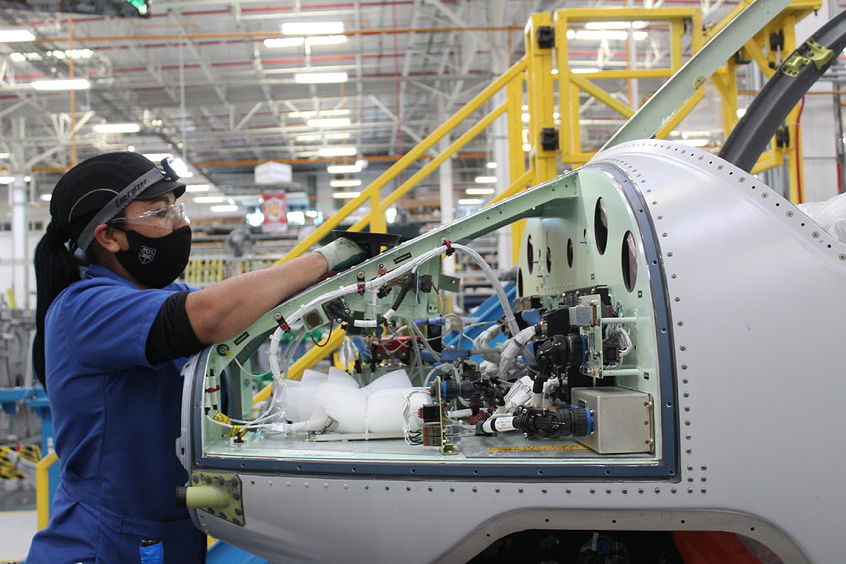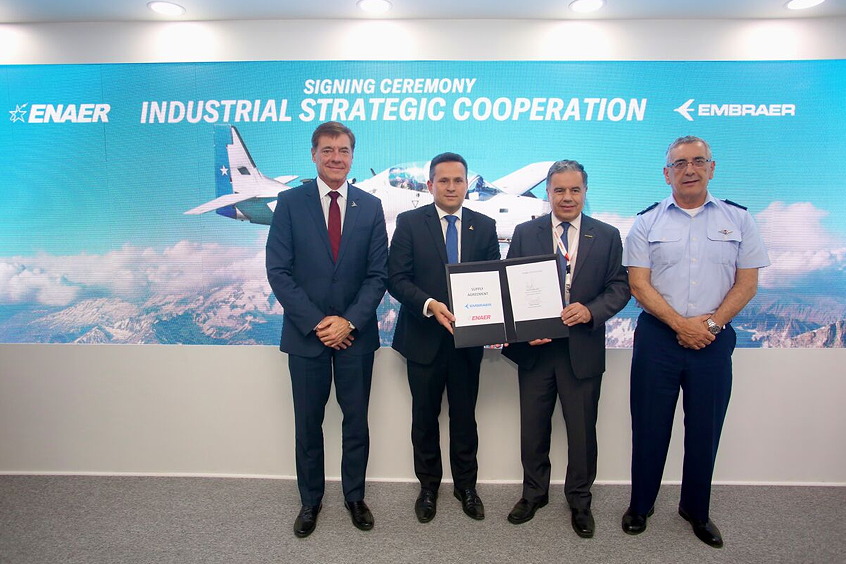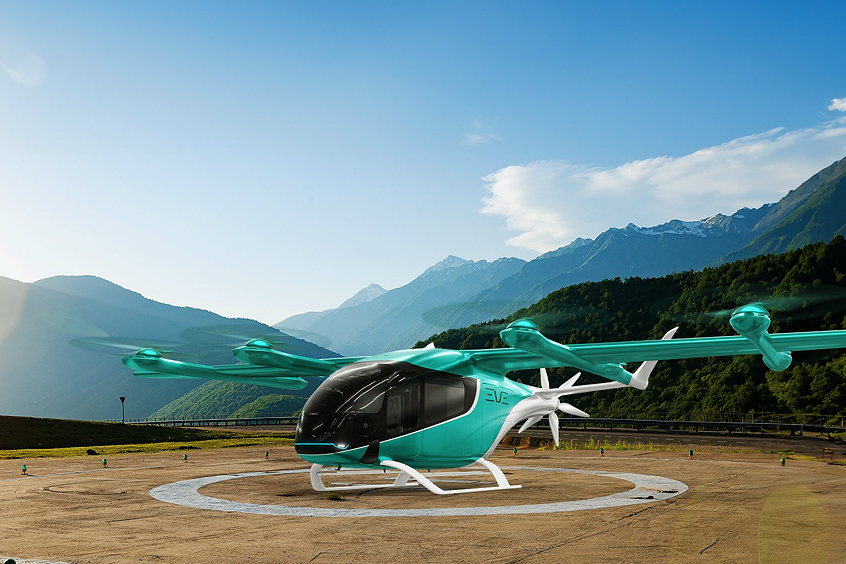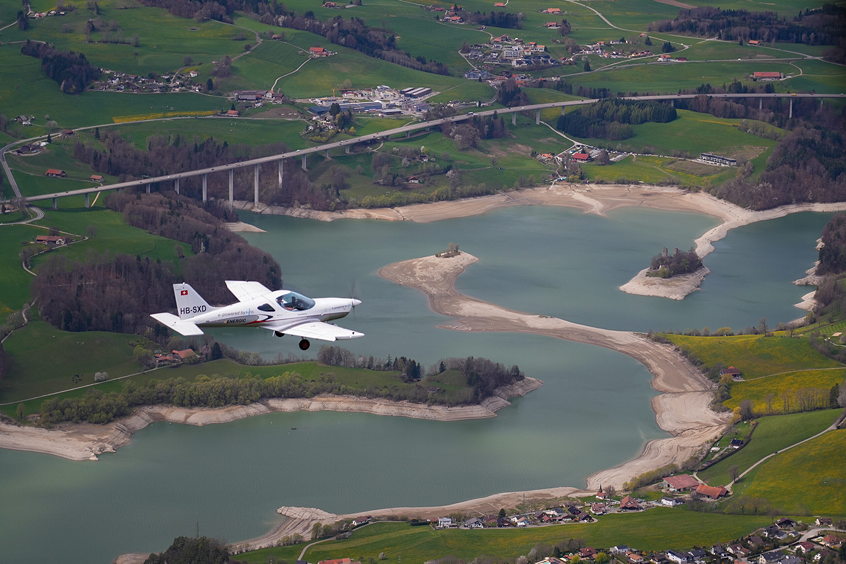The NCMT stand at the Farnborough International Airshow this year will feature two distinct areas of manufacture – milling of aircraft structural parts and grinding of engine components using the VIPER process developed by Rolls-Royce. The manufacturer of the machining centres for both of these applications is Makino, Japan, for which NCMT is sole UK agent.
An Airbus A380 wing rib measuring 3 metres by 1.75 metres, milled from solid aluminium to close tolerance at Filton on Makino MAG-Series horizontal, five-axis machining centres, will be available for inspection. On display also will be a rib for the A320.
They are representative of the wide range of aluminium structurals for aircraft being machined worldwide on high-speed Makino machines, which are renowned as among the most flexible and cost effective for production in the aerospace industry. The rationale is that the machines can produce large, complex components to very high accuracy in a single set-up, eliminating the need to make two or more sub-assemblies and so dramatically reducing manufacturing lead-time and cost.
Emphasis will also be placed on parts machined from titanium. According to NCMT, there are a number of developments in the pipeline from Makino specifically targeted at this material, which is becoming increasingly popular in the aerospace sector. Innovations will include completely new machines and spindles, including a high torque (1,050 Nm) gearless spindle.
For producing engine parts, VIPER creep-feed grinding is a major advance in production technology, capable of stock removal rates up to eight times those achievable when conventionally grinding nickel alloys using a plated CBN wheel. Broaching, milling and turning operations can also be eliminated using the VIPER superabrasive process. In all cases, consumable costs are reduced dramatically.
Latest development is the introduction of the new Makino i-Grinder G5, designed specifically to exploit the technology to the full. Until now, the platform used was a standard horizontal machining centre, albeit extensively modified with very high-pressure coolant delivery to the vitrified aluminium oxide wheel via programmable nozzles and through the high-speed spindle.
The new, purpose-built, 5-axis machine is available through Makino-NCMT Grinding Division, a company formed to market the turnkey manufacturing systems across Europe and Scandinavia. Recent sales successes have been recorded in Italy and Germany for the manufacture of compressor and turbine blades, and blisks, while Makino has sold a number of machines to aero engine manufacturers in Japan.
Overall, the i-Grinder G5 is 10 per cent quicker at machining nickel alloy components than the modified Makino A55 machining centre that it supersedes. Metal removal rate is of the order of 80 cc/min and the machine accepts parts nominally up to 300 mm in diameter. The enhancement in grinding efficiency comes from a number of factors, including an increase in linear rapid traverse rate from 40 to 48 m/min. Faster rotary workhead speed, which has more than doubled to 100 rpm, is especially beneficial when grinding smaller components.
Probably the most critical improvement, however, is in the design of the programmable coolant nozzles. They are more versatile on the i-Grinder G5, as they may be positioned by two rotary NC axes anywhere through 360 degrees around the periphery of the grinding wheel, rather than through just 180 degrees, as was the case with the A55. To achieve this greater degree of freedom, power and coolant supplies are built-in, rather than being delivered through an umbilical cord. Nozzle positioning speed is faster and therefore more responsive when changing position to direct coolant accurately towards the point of cutting.
A big advantage of VIPER grinding on a horizontal machining centre is that in addition to abrasive wheels, other live and static tools such as milling cutters, drills, broaches or turning tools may be exchanged automatically between the tool magazine and the spindle, allowing additional machining operations to be carried out in the same cycle.
Related technologies that have been developed by Makino-NCMT to achieve world class process capability and throughput include EasyGrind and EasyGear programming software, flexible fixturing, and manual or in-cycle part measurement, verification and truing.
| Contact details from our directory: | |
| NCMT Ltd | Machining Systems, Machine Tools, Tooling |
| Related aircraft programs: |
| Airbus A380 |
| Related directory sectors: |
| Tools |
| Tooling |
| Machining |
Weekly news by email:
See the latest Bulletin, and sign up free‑of‑charge for future editions.

Bell Mexico delivers 800th commercial aircraft cabin

Chile's ENAER expands cooperation with Embraer

Eve names KAI as supplier for eVTOL pylons
